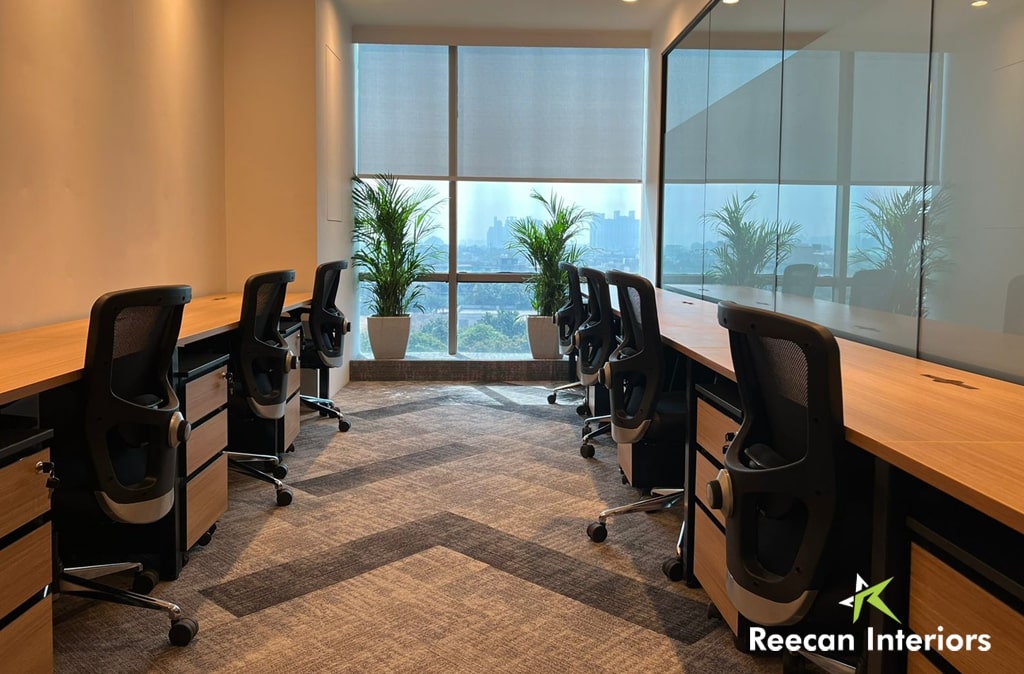In the realm of office design, the waiting area often takes a backseat to more functional spaces such as meeting rooms and workstations. However, in India, the waiting area serves as a vital component of office interior in India, reflecting not only the corporate culture but also the values of hospitality and customer engagement that are deeply ingrained in the Indian ethos. The waiting area is a microcosm of the entire office environment, embodying the first impressions of clients, employees, and stakeholders.
Table of Contents
ToggleSignificance of the Waiting Area
The waiting area plays a multifaceted role in an office setting. For clients and visitors, it is typically the first point of contact with a business, setting the tone for their overall experience. A well-designed waiting area can convey professionalism, creativity, and warmth, influencing perceptions of the company even before any formal interaction takes place. In a culturally rich and diverse country like India, where personal relationships and trust significantly affect business transactions, the design of this space can create a welcoming atmosphere, fostering a sense of belonging for those who enter.
Moreover, a thoughtfully curated waiting area can serve functional purposes. It can act as an informal meeting space, where employees can engage with clients while waiting for appointments. This casual interaction can lead to relationship-building that may not occur within the confines of a typical conference room. It also provides a momentary respite for employees, allowing them to pause, recharge, and prepare mentally for upcoming interactions or tasks.

Designing the Waiting Area
Designing an effective waiting area requires a careful balance of aesthetics and functionality. In India, the incorporation of local elements, such as traditional art, textiles, and handicrafts, can enhance the cultural resonance of the space. Elements like comfortable seating, adequate lighting, and vibrant colors can create a friendly ambiance. Ergonomic furniture that accommodates diverse age groups and mobility needs underscores inclusivity, a concept increasingly valued in modern work environments.
Moreover, integrating technology can improve the overall experience of those using the waiting area. Providing free Wi-Fi access, charging stations, and digital displays with information about the company can cater to the needs of tech-savvy clients and employees. At the same time, clear signage is essential in guiding visitors and reducing confusion upon entering the office.
Psychological Impact
The psychological impact of a well-designed waiting area cannot be overstated. In a business context, anxiety and impatience often accompany waiting. A thoughtfully designed area can help alleviate these feelings through strategic use of design and decor. Calming colors, nature-inspired elements, and even soothing music can create an environment that helps visitors relax. Emphasizing the importance of mental well-being, particularly in today’s fast-paced world, should be a cornerstone of workplace design in India.
Conclusion
In conclusion, the waiting area is far more than just a transitional space in an office. Its importance in the overall office interior design in Gurgaon can influence perceptions, enhance client interactions, and foster a positive work culture. For Indian businesses, where hospitality and personal touch hold significant value, investing in a well-designed waiting area is not merely a matter of aesthetics; it is a strategic decision that reflects a commitment to creating a welcoming and enjoyable environment. As companies continue to adapt to changing work dynamics and cultural expectations, the waiting area will remain a fundamental element that conveys the essence of an organization to all who enter.









